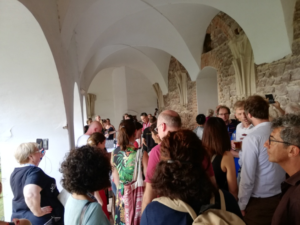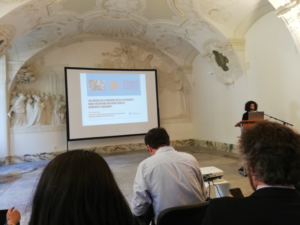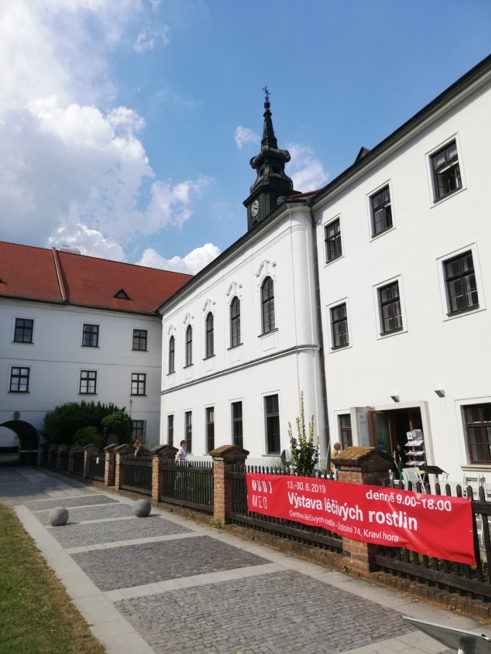UNIVERSEUM 2019
by Chiara Bartolini, University of Bologna
This year I had the privilege of attending and presenting at the Universeum 2019 conference, which was held in Brno and Prague. As a first-timer, most of the participants were new to me, as well as the format of the activities. Nonetheless, I felt at ease within this community of museum professionals and researchers, who welcomed me to the “family” and shared their passionate work.
I was positively impressed and encouraged by the lively exchange of ideas and experiences in a conference which gathers together participants with a diverse and extraordinary array of projects and case studies, focusing on academic heritage from different perspectives.

All the sessions were rich in inspiring presentations, which stimulated discussions on several different themes. Among them, a recurring one was the audience, which is a particularly interesting theme to me as it is relevant to my current PhD. I was glad to see that many speakers throughout the conference touched on it and provided all of us with different representations of and references to this broad concept. I will only cite some examples among many remarkable ones, and comment on a specific discussion related to crowdsourcing.
What audience do university museums want to engage with? Different answers may apply here. During the very first session on Tuesday, Marlene Mouliou underlined the importance of the public value of museums and the need for serving diverse audiences “in different manners”, e.g. by customising the projects and services offered.
While presenting the new and promising Ghent University Museum, which will open next year, Marjan Doom claimed that it will be a public museum but mainly addressing 15 to 25 year-old people. Hans Hooijmaijers presented the transformation of the Rijksmuseum Boerhaave from “a place for connoisseurs” to “a museum for all”, including “retired scientists and youngsters”. Silke Ackermann reported on having different audiences at the History of Science Museum in Oxford: for instance, they had a project with forced migrants from Syria aimed at providing them with practical skills and pursuing the museum social responsibility role.

Audience engagement was also connected with issues of control of knowledge within co-production projects, which according to Giovanna Vitelli are an opportunity for “bringing other voices in without throwing out the knowledge of curators.” Several student engagement projects were presented: among them, Faye Tsitou and Vagelis Papoulias, from Athens University History Museum, showed a project with school students aimed at creating temporary exhibits, but stressed that “students interpretation shouldn’t contradict university facts.”
The distinction between the authority of the institution and that of the “crowd” also emerged when Stefan Wiederkehra presented the ETH Library’s Image Archive project based on an open data policy and crowdsourcing for participatory curation. Through an intuitive feedback function, the project allows comments of any user to any picture included in the photo archive of Swiss Air in order to improve the metadata available about the images. During the session of the Digital Initiatives working group, a fascinating discussion developed on this project and on community management, as crowdsourcing may allow a museum to convert a “crowd” into a “community”. The issue of whether giving up control on certain points or keeping it centrally was explored, and consequently the position of the museum within the community was questioned: is the museum the only expert or is it one of many experts?
I am deeply grateful to Universeum for funding my travel expenses to this conference, which allowed me to share my ongoing research with museum professionals and scholars. I am really looking forward to the next Universeum conference, which will be held next year in Belgium. Many thanks to all — děkuji!

